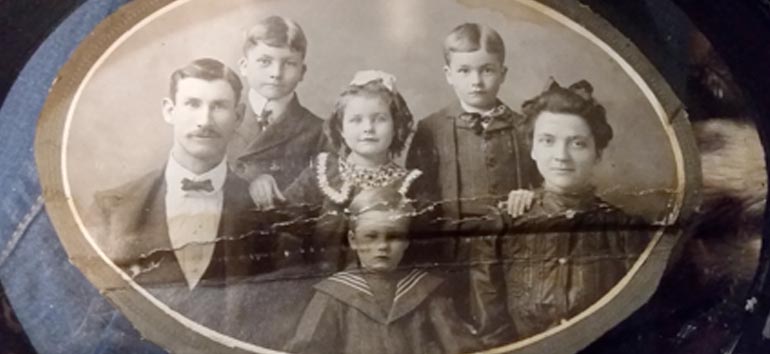Sign up for the Family Tree Newsletter! Plus, you’ll receive our 10 Essential Genealogy Research Forms PDF as a special thank you.
Get Your Free Genealogy Forms
"*" indicates required fields
Don’t know the difference between a JPG and a TIF? Wondering how much resolution you really need? We’ll catch you up on the digital-imaging lingo.
• Batteries: Digital cameras come with alkaline, lithium-ion or nickel-metal-hydride (NiMh) batteries. Alkalines are convenient because you can buy them anywhere, but they don’t last as long as the other types. Stick with rechargeables, and keep a spare battery handy just in case. Cameras eat batteries at an alarming rate, especially when the LCD screen (see below) is turned on.
• File format: JPCs, GIFs and TIFs are the universal formats recognized by all photo software. Use JPGs and GIFs for posting online. TIFs make better prints.
ADVERTISEMENT
• LCD screen: Use this viewing area on digital cameras to compose photos, then instantly play them back.
• Memory: Most digital cameras come with removable storage media. The number of photos a memory card can hold depends on the card’s capacity and the resolution setting. For example, a 32MB card will hold about 20 high-quality 4×6-inch pictures. The various memory-card types perform equally well.
• Resolution: The higher a camera’s resolution (measured in megapixels), the larger the image you can create without sacrificing quality. In general, 2 megapixels can produce 4×6-inch prints; 3 megapixels, 5×7-inch prints; 4 megapixels, 8×10-inch prints; 5 megapixels, 10×13-inch prints; and 6 megapixels, 11×14-inch prints. Printers and scanners measure resolution in dots per inch (dpi). You generally need 300 to 600 dpi to get print-quality images.
ADVERTISEMENT
Zoom: Look for a camera with at least a 3X optical zoom lens, which can enlarge an object up to three times. Don’t put much stock in a camera’s digital zoom, which enlarges the subject after the shot’s been taken (by cropping it) and produces lower-quality images. For extreme close-ups, you’ll need a camera with a macro mode.
From the December 2004 issue of Family Tree Magazine.
ADVERTISEMENT




